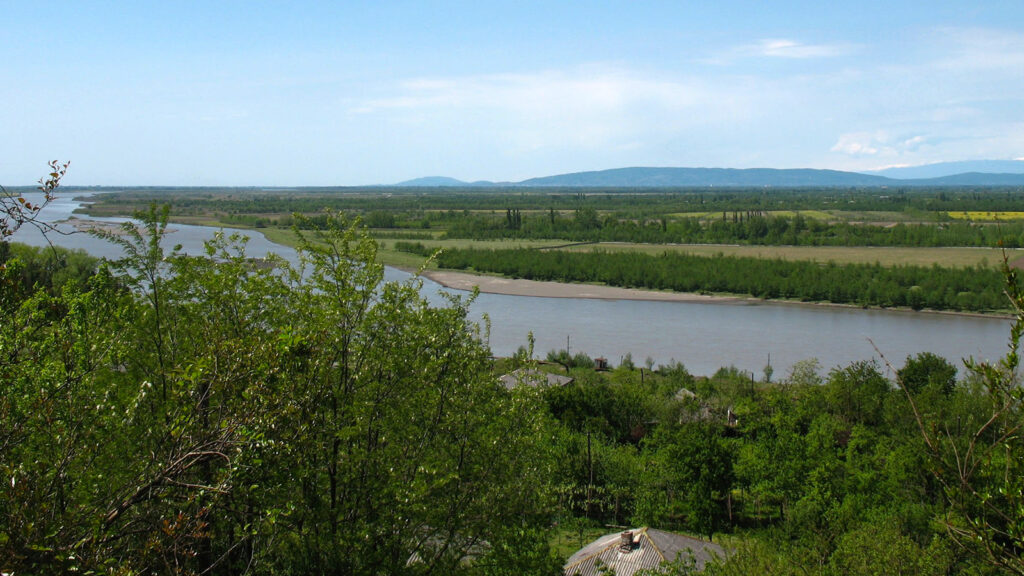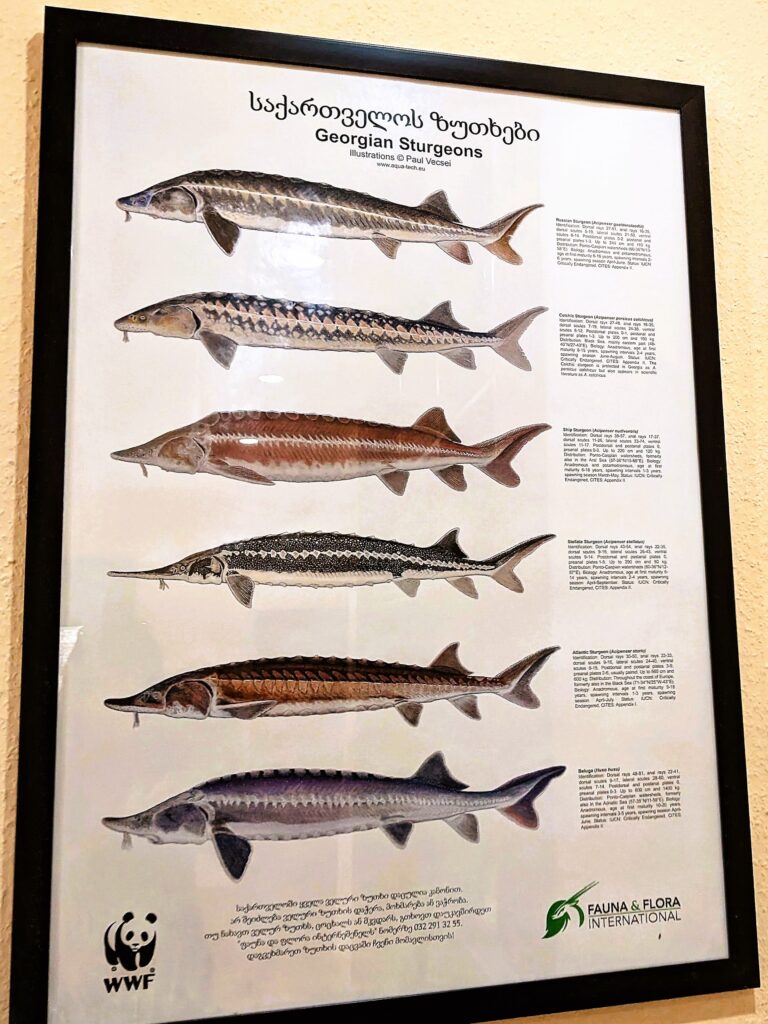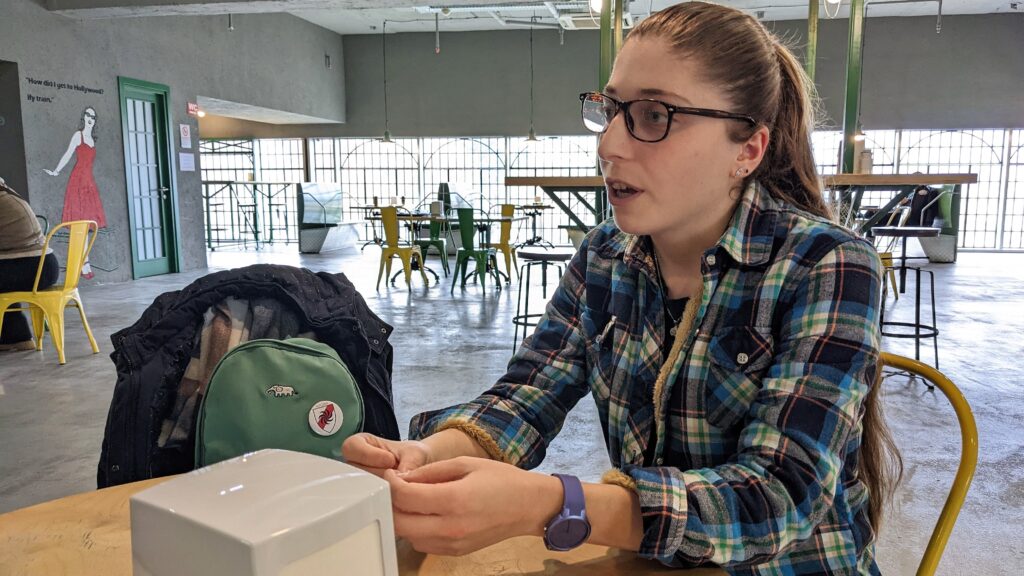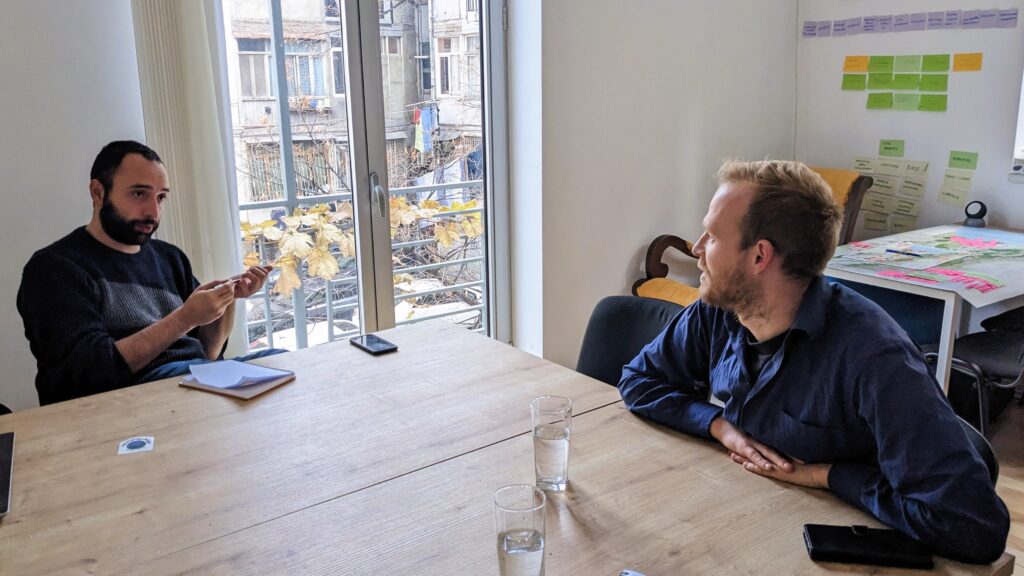Did you know that:
- There are 27 species of sturgeons.
- All of the 27 species are endangered.
- Making the sturgeons the most threatened group of species in the world.
- Sturgeons can grow up to 8m long, 1.5 tons heavy and live up to 120 years.
- Sturgeons have been around for 200 million years, co-existing with dinosaurs.
- They are only sexually mature at the age of ca. 15 years.
All of these facts show that sturgeons are a very special group of fish. They are amongst the oldest and biggest fish species in the world, but they are by now the most threatened ones. Also to us, especially to Hanna, it is a special fish. In her hometown Samorin located at the Danube, tales of meter-long sturgeons caught tens or even hundreds of years ago are still alive in people’s memories just as in many other places where sturgeons used to be plentiful.
The pressure on sturgeons continues rising
Nowadays, such impressive individuals are practically extinct and most of the sturgeons’ original distribution is inaccessible to them because of dams and other barriers blocking their migration routes. Even where they still occur, overfishing, river channelization and gravel or sand mining have destroyed their habitats and decimated numbers. In most of the countries we passed on our journey, sturgeons have gone extinct, like in most parts of the Danube and all rivers in Turkey.
The Rioni river
So, sturgeons were not really on our radar when we entered Georgia. Luckily, we heard about the work of Tamar Edisherashvili, a PhD student working on the ecology of sturgeons in the Rioni river in Western Georgia. Meeting and talking to her, we learned that the Rioni river is not only the last stronghold of sturgeons in Georgia, but in the whole Eastern Black Sea region. Within the Black Sea basin, there are only a few rivers left that allow the migration of sturgeons to their spawning grounds, making each one an important jewel for sturgeon conservation.

The Rioni is not only the last sturgeon river in the Eastern Black Sea, it also hosts six sturgeon species, as many as the Danube. This includes the Colchic sturgeon that occurs nowhere else anymore. Unfortunately the river’s importance for biodiversity was only discovered a few years ago. In 1972, the Vartsikhe dam restricted migration from the Black Sea to the lowest 100 km downstream. And ongoing gravel mining, pollution by a mangan processing facility, hybridisation with non-native farmed sturgeons and overfishing for caviar and meat or as bycatch continuously threaten sturgeon populations.
FFI & WWF step in to protect sturgeons
How dire the situation is, but also how important the Rioni is on a global scale, was discovered by the big international NGOs Flora & Fauna International (FFI) and World Wildlife Fund (WWF). Subsequently, they started working here to investigate and improve the situation.

The first step to help the sturgeon populations is sound scientific research. Tamar spent months on and around the river trying to catch individuals to examine them and take genetic samples to determine the species, which is hard solely based on morphology and further complicated by an ongoing discussion about their taxonomy.Already in 2011, A.Guchmanidze discovered that the spawning hotspot is located close to Samtredia. Most spawning takes place in these nine kilometers of the Rioni, making the river stretch crucial to protect. Tamar also investigated the Enguri river, which is further north, but had to conclude that sturgeons have disappeared completely, probably due to the construction of the Enguri Dam.
Turning poachers into collaborators
For her research, she cooperates with FFI and local fishermen. In this poorer region of Georgia, many locals still rely on fishing to feed themselves and make a living. To turn them from possible poachers into collaborators, FFI supports them with gear and, in hard times, even food. Mikheil Potskishvili, Caucasus Programme officer of FFI, tells us that education is also a big part of FFI´s work here. This involves a lot of time dedicated to talking with fishermen about the uniqueness of sturgeons, and encouraging them to notify FFI when they bycatch sturgeons, so that researchers can take samples of them. This has increased the number of samples many-fold and at the same time shifted the attitudes towards these threatened fish.



Through these samples, Tamar and another PhD student doing the genetic analysis discovered one species that was considered extirpated in Georgia. But all scientific findings are futile without further actions. This is why FFI puts its focus on three pillars: law enforcement, research and education.
Supporting authorities
FFI has established a branch in Georgia in 2013 and sturgeons are currently one of two focus topics besides birds of prey. Since 2018, they work with local authorities to improve law enforcement, following FFI’s principle of incorporating the fight against illegal wildlife trade into every project, as Mikheil explains. This includes training judges and prosecutors in illegal wildlife trade and supporting law enforcement by setting up so-called ‘anti-poaching teams’. These groups of 2-3 persons patrol the river during the spawning season from March to September looking out for poachers. They have no law enforcement authorities, but collaborate with the ‘Department of Environmental Supervision’. But their main goal is not punishment anyway, but rather educating poachers about the impact and risk of their activities.
“Conservation should be done with people that live close to it. Our whole idea is to make locals proud of the sturgeons, so that they see it as their heritage.”
Mikheil Potskhishvili, FFI Programme Officer Caucasus
FFI and WWF also target youth visiting schools to raise awareness among students about sturgeons and the importance of the Rioni. The goal of their community work is to turn locals into caretakers of the rivers and give them an alternative to exploiting the river.
Improving legislation
WWF complements FFI’s work by lobbying for improved legal protection of sturgeons and their habitats. They sit down with important stakeholders like the Agency for Protected Areas and hydropower / mining companies to protect the spawning grounds. This has already been successful: In 2022, the mouth of the Rioni as well as the sea around it and parts of the river upstream, have become part of the Kolkheti National Park. The attempt to designate a sanctuary at the second spawning ground near Samtredia has not been successful yet, but the project manager Nino Peradze is not ready to give up.
While continuing these efforts, she started the second phase of WWF’s sturgeon programme in 2021 initiating the development of sturgeon monitoring and its implementation. In 2018, WWF invited several international sturgeon experts to explore possibilities and methods for monitoring (as you can see in the video), and such involvement of international experts will be crucial to move forward.
Results beyond sturgeon conservation
All of these efforts have already shifted the attitudes of many Georgians, which is exemplified by protests against the Namakhvani dam. In 2019, the Georgian government signed an agreement with a Turkish construction company to build a gigantic dam in the Rioni upstream of Kutaisi. This happened without any environmental assessment, which only has to be provided after the construction work has already started. Georgians affected by this, but also in Tbilisi and across the country organized protests with over 10.000 participants to fight this decision, which would destroy entire ecosystems, not to mention several villages. These nationwide protests have been successful for now, as the construction of the dam is paused. The danger to sturgeon populations are one of the criticisms as the change in water flow might destroy their downstream spawning grounds and extirpate sturgeons from Georgia completely.
The story of sturgeon conservation in Rioni shows that threats, especially to freshwater species, are plenty and often overlooked, but it is also a good representation of how the work of NGOs can create an impact on the national discourse and have long-lasting influence beyond the scope of a single project.

